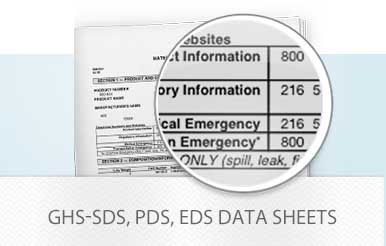What Painters Need To Know
Widespread media coverage has made mold a concern for many homeowners and business owners. It's also a hot topic for your customers in the real estate and building construction industries. As a painting contractor, you need to be informed so you can help your customers combat this challenge. Here are some of the most frequently answered questions about mold:
What is mold?
Mold is a rapidly reproducing microscopic fungus that feeds on decomposing organic matter.
Why is mold a problem?
Many molds are harmless, and are, in fact, a vital part of our ecosystem. But, if you've ever gotten food poisoning or suffered from allergies, you know that all molds are not benign. Some molds create toxins, which can seriously affect the health of plants, animals and people.
Where do you find mold?
Homes make an ideal growing place for mold. Molds thrive in temperatures between 60° and 100° F, where moisture and an abundant food supply are present.
Are certain surfaces more susceptible to mold?
Yes. Building materials like drywall, gypsum wallboard, wood, adhesive, ceiling tiles, paint, plywood, paper and cardboard all contain cellulose, which is a source of food for molds.
Is mold the same as mildew?
They are similar but not the same. Mildew is a mold-like organism that feeds on organic tissues. In homes, mildew thrives on damp surfaces, especially in kitchens and bathrooms.
Is there anything I can do as a painter to combat mold?
One good starting point is to use paints with anti-microbial properties, such as Sherwin-Williams Harmony and Duration Home.
What if I find mold growing in a project I am painting?
Mold growing on non-porous surfaces can be cleaned with a detergent. But the affected parts of porous surfaces such as drywall must be completely replaced, and the area must then be cleaned thoroughly.
What about wood trim?
A semi-porous surface like solid wood, if infected, may require a combination of cleaning and replacing, depending on the severity of mold growth.
Is there any other advice I can give to my customers on how to reduce mold growth in their homes and businesses?
Sure. Some good steps are to seal ductwork, to allow for proper drainage of rainwater, and to exhaust moist air and allow fresh air to circulate indoors.
The Myths About Mold
All molds are toxic.
Not quite true. Only a few can cause health problems under certain conditions.
Black mold is the worst.
There are many molds that are black. But however threatening a mold may look, you cannot determine toxicity by color.
Mold only grows in warm and humid climates.
Certain kinds of mold have adapted to survive in almost any climate. But most flourish in temperatures between 60° and 100° F.
Old buildings have more mold problems than new construction.
Actually newer builds may have more problems because their tighter insulation allows moisture to build up inside.
Using bleach eliminates mold.
Bleach can control mold growth on surfaces, but often does not affect the source of the problem. Also, bleach should not be used on porous materials or metals.
6 ways to reduce mold growth
Allow for drainage of rainwater. Moisture that enters a building after a storm is one of the causes of mold. Roots, windows, exterior doors and walls should be constructed to allow water to drain to the outside of the structure.
Exhaust moist air out of the building. Use exhaust fans in bathrooms, in kitchens above stoves, and wherever else moisture can build up.
Seal ductwork. Leaky ducts allow cool air into buildings. When this cool air mixes with warm air, the dew point changes and water condensation is created. Also, leaky ducts can create air pressure imbalances. Both of these conditions make indoor moisture harder to control and lead to air quality concerns.
Allow plenty of fresh air to circulate. Proper ventilation will help prevent mold and other indoor contaminants from building up in a house.
Remove sources of mold. Clean mold growing on non-porous surfaces with a detergent. On porous surfaces like drywall infected surfaces must be completely replaced. Infected semi-porous materials like solid wood might require a combination of cleaning and replacing.
Use Sherwin-Williams mold removing products such as:
3M™ TEKK Protection™ Mold and Lead Particle Respirator 6297PA1-A







